This section allows you to view all posts made by this member. Note that you can only see posts made in areas you currently have access to.
Messages - ssshashini
Pages: 1 ... 32 33 [34] 35 36 ... 38
496
« on: July 10, 2018, 02:41:50 PM »
Apple today announced that transcripts are now available for all of the WWDC 2018 videos, which can be found both in the WWDC app and on Apple's developer website. Transcripts are searchable and downloadable, so you can quickly locate specific content within each video. 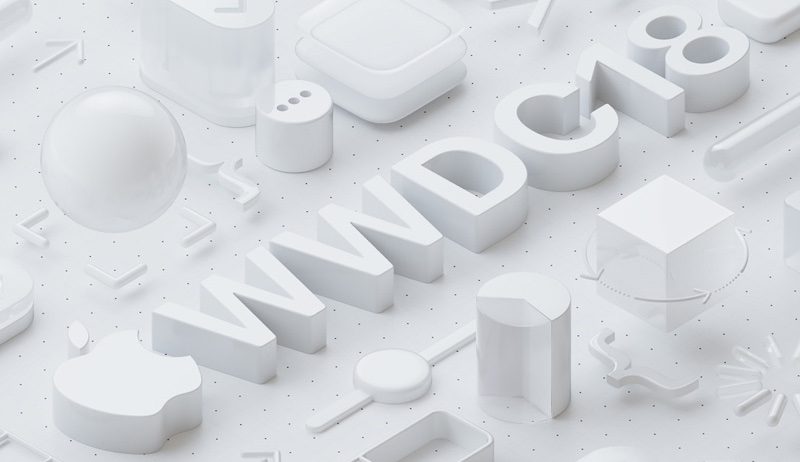 Take advantage of transcripts to quickly discover and share information presented in WWDC18 videos. You can search by keyword, see all instances where the keyword is mentioned in the video, go straight to the time it was mentioned, and even share a link to that specific time. Apple shares dozens of WWDC sessions led by Apple engineers on its website after each Worldwide Developers Conference. The 2018 content has been available since June, but not all videos featured transcripts. There are a wide range of topics available, covering iOS, macOS, watchOS, and tvOS, with all content free for both registered developers and non-developers. Discuss this article in our forums   
497
« on: July 10, 2018, 02:41:50 PM »
Security researchers claim to have discovered a loophole that bypasses USB Restricted Mode, Apple's latest anti-hacking feature in iOS 12 beta and iOS 11.4.1, which was released on Monday. USB Restricted Mode is designed to make iPhones and iPads immune to certain hacking techniques that use a USB connection to download data through the Lightning connector to crack the passcode. 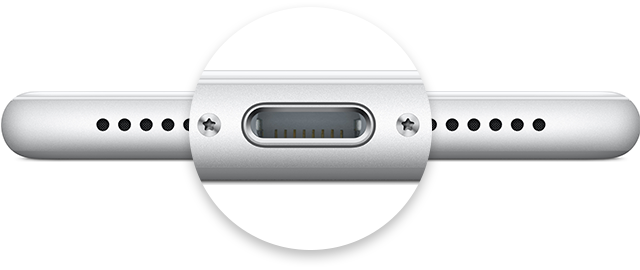 iOS 11.4.1 and iOS 12 prevent this by default by disabling data access to the Lightning port if it's been more than an hour since the iOS device was last unlocked. Users can also quickly disable the USB connection manually by engaging Emergency SOS mode. However, researchers at cybersecurity firm ElcomSoft claim to have discovered a loophole that resets the one-hour counter. The bypass technique involves connecting a USB accessory into the Lightning port of the iOS device, which prevents USB Restricted Mode from locking after one hour. ElcomSoft's Oleg Afonin explained the technique in a blog post: What we discovered is that iOS will reset the USB Restrictive Mode countdown timer even if one connects the iPhone to an untrusted USB accessory, one that has never been paired to the iPhone before (well, in fact the accessories do not require pairing at all). In other words, once the police officer seizes an iPhone, he or she would need to immediately connect that iPhone to a compatible USB accessory to prevent USB Restricted Mode lock after one hour. Importantly, this only helps if the iPhone has still not entered USB Restricted Mode.According to Afonin, Apple's own $39 Lightning to USB 3 Camera Adapter can be used to reset the counter. Researchers are currently testing a mix of official and third-party adapters to see what else works with the bypass technique. 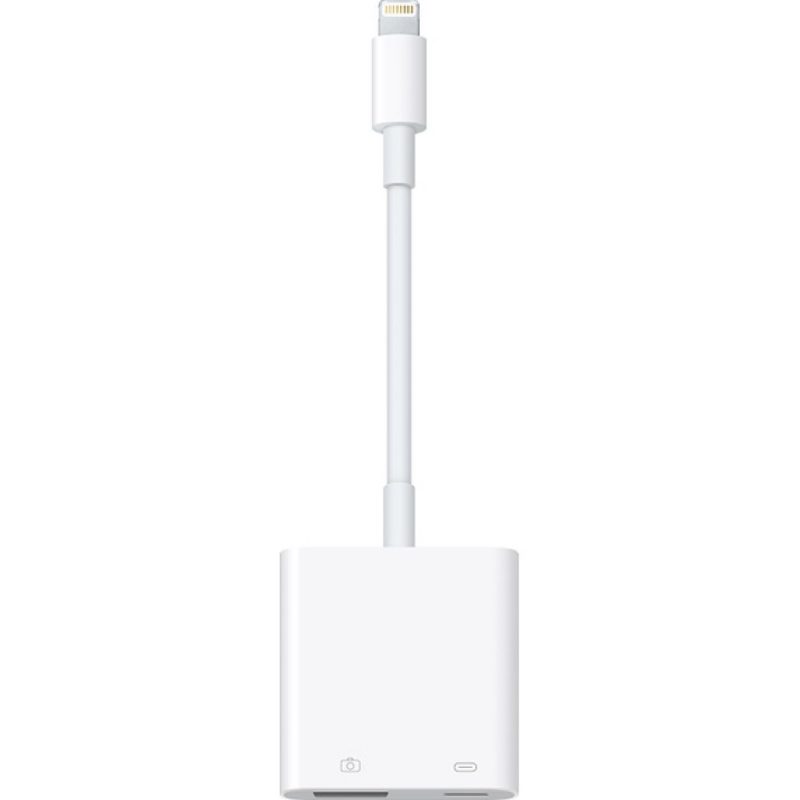 Afonin notes that ElcomSoft found no obvious way to break USB Restricted Mode once it has been engaged, suggesting the vulnerability is, in his words, "probably nothing more than an oversight" on Apple's part. Still, at present its existence provides a potential avenue for law enforcement or other potentially malicious actors to prevent USB Restricted Mode from activating shortly after seizure. Both iOS 11.4.1 and iOS 12 beta 2 are said to exhibit the same behavior when exploiting the loophole. However, expect this to change in subsequent versions of iOS – Apple continually works on strengthening security protections and addressing iPhone vulnerabilities as quickly as possible to defend against hackers. Apple reportedly introduced USB restrictions to disable commercial passcode cracking tools like GrayKey. Afonin cites rumors that the newer GrayShift tool is able to defeat the protection provided by USB Restricted Mode, but the research community has yet to see firm evidence confirming this. Related Roundups: iOS 11, iOS 12Tag: Apple securityDiscuss this article in our forums   
498
« on: July 10, 2018, 02:31:24 AM »
Apple today shared four new 15-second ads highlighting the portability of the iPad for education and travel. The ads, titled , , , and , depict the iPad as a space-saving replacement for textbooks in the classroom, paperwork in the office, and a laptop during a flight. Many of the comparisons are exaggerated — for example, the baby on the plane suddenly stops crying when the camera pans over the passenger using an iPad —*but the ads convey a clear message about the iPad's versatility. Two of the ads show the iPad Pro, and two show the sixth-generation iPad, introduced at Apple's education event last March. The latter is priced from $329 in the United States, serving as a lower-cost alternative to the iPad Pro. Subscribe to MacRumors on YouTube for more videos Apple initially uploaded the ads to its YouTube channels in Asia, Europe, and the Middle East, and later in the United States. Related Roundup: iPadTag: Apple adsBuyer's Guide: iPad (Buy Now)Discuss this article in our forums   
499
« on: July 10, 2018, 02:31:24 AM »
While the Galaxy S9 and Galaxy S9+ were only released nearly four months ago, rumors have already surfaced about the Galaxy S10 lineup. 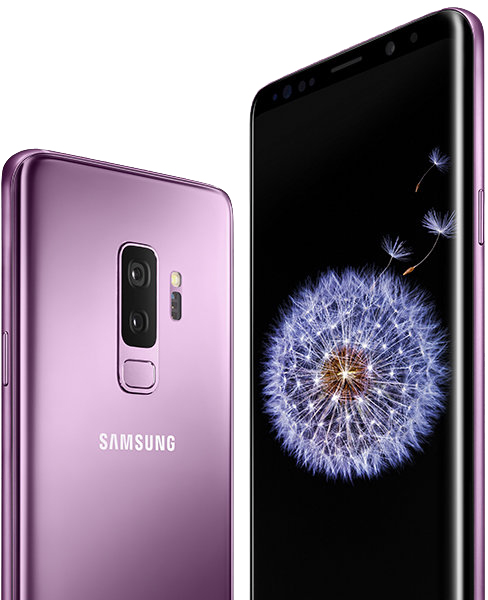 Galaxy S9 Galaxy S9 Korean website The Bell today reported that Samsung plans to release a trio of new Galaxy S smartphones next year, including the Galaxy S10, Galaxy S10+, and a lower-priced version of the Galaxy S10. The latter device is expected to be the first-ever entry-level Galaxy S model, not a Galaxy A or Galaxy J model. If that sounds familiar, it is because Apple is widely rumored to introduce a trio of new iPhones this September, including a second-generation iPhone X, a larger 6.5-inch version dubbed the iPhone X Plus, and a lower-priced 6.1-inch iPhone, with some but not all features of the iPhone X. The report adds that the Galaxy S10+ will feature a triple-lens rear camera system and a dual-lens front camera system. The rear system is said to include the same 12-megapixel wide-angle lens and 12-megapixel telephoto lens as the Galaxy S9+, in addition to an all-new 16-megapixel 120º ultra-wide-angle lens. Again, if that sounds familiar, it is because Apple is rumored to introduce at least one new iPhone with a triple-lens rear camera in 2019. The standard-sized Galaxy S10 is expected to have a single-lens front camera and a triple-lens rear camera, while the entry-level Galaxy S10 is said to sport a single-lens front camera and a dual-lens rear camera. Last week, The Bell reported that the Galaxy S10 and Galaxy S10+ will feature an in-display fingerprint scanner, and possibly 3D facial recognition, similar to Face ID on the iPhone X. These would likely be the only biometric authentication options, as Samsung reportedly plans to exclude iris scanning on the devices. Samsung is expected to unveil the Galaxy S10 and Galaxy S10+ at Mobile World Congress next February and release the smartphones in March. Tags: Samsung, Galaxy S10Discuss this article in our forums   
500
« on: July 10, 2018, 02:31:24 AM »
On June 19, former AT&T executive and new chief executive of Warner Media John Stankey spoke to a group of HBO employees about changes coming to the premium cable company in the near future. The discussion was held in the wake of AT&T's acquisition of Time Warner, which owns HBO, and also included HBO's chief executive officer Richard Plepler. The telecommunications company previously stated that it would take a "hands-off approach" to running HBO, but The New York Times this weekend reported on Stankey's speech and it sounds like that might not be the case. According to a video of the discussion, Stankey explained Warner Media's intent to align HBO more alongside streaming companies like Netflix in order to increase its subscriber base, although he refrained from referencing Netflix by name. 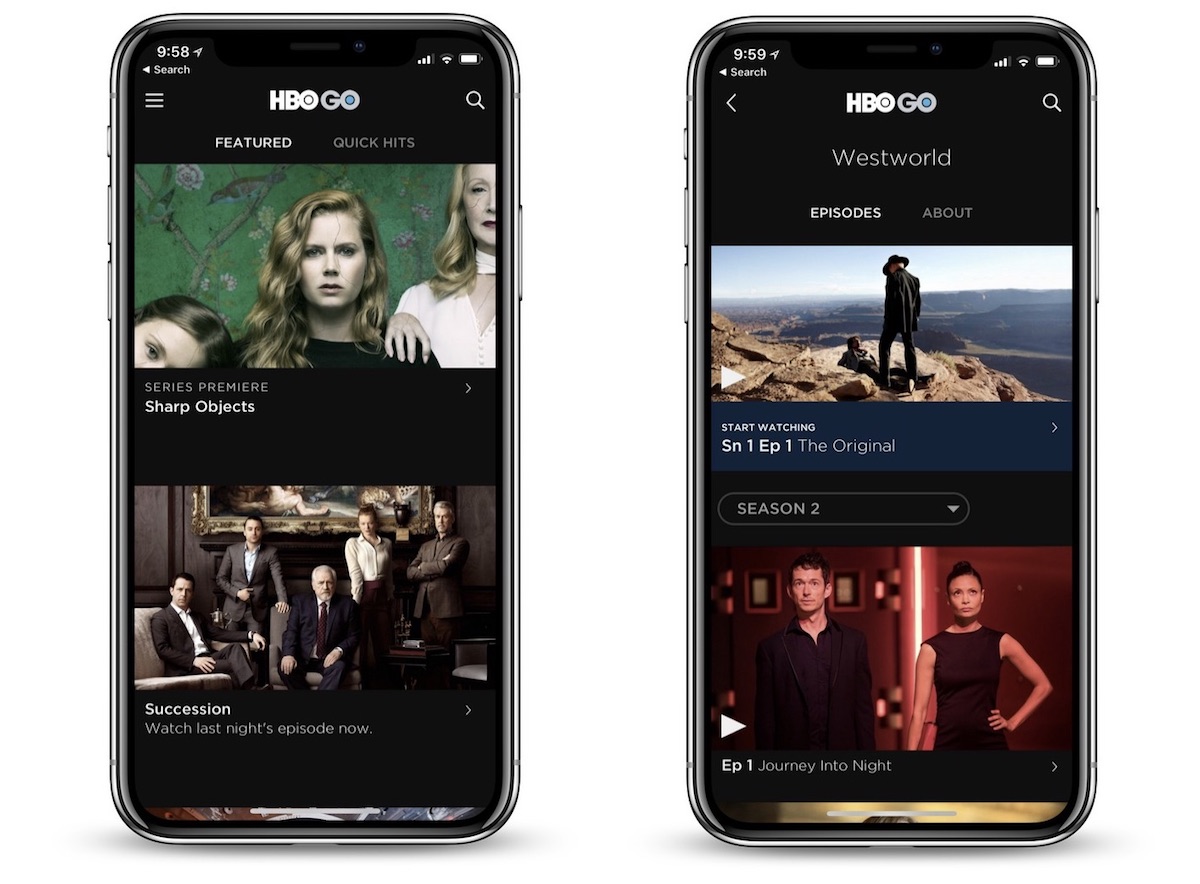 This means creating more content that releases at a faster pace, in comparison to HBO's current stable of limited Sunday night-focused shows. According to Stankey, the goal is to increase the hours per day viewers watch HBO, which is currently less than rivals like Netflix and Hulu because of HBO's smaller catalog. “We need hours a day,” Mr. Stankey said, referring to the time viewers spend watching HBO programs. “It’s not hours a week, and it’s not hours a month. We need hours a day. You are competing with devices that sit in people’s hands that capture their attention every 15 minutes.” Continuing this thread, Stankey specifically stated that more hours of user engagement means that Warner Media can "get more data and information" to monetize through advertisements and new subscription options. “I want more hours of engagement. Why are more hours of engagement important? Because you get more data and information about a customer that then allows you to do things like monetize through alternate models of advertising as well as subscriptions, which I think is very important to play in tomorrow’s world.” As the discussion continued, Stankey appeared to have butted heads slightly with Plepler on the topic of HBO's monetization, which Stankey believes can be increased through his new methods. Plepler claimed that the company is already a consistent moneymaker, to which Stankey responded: "Yes, yes you do... Just not enough." Stankey and Warner Media hope that an increased output of original content will boost HBO's 40 million paid subscribers in the United States, which Stankey said as of now "was not going to cut it." Comparatively, Netflix earlier this year had 55 million U.S. subscribers and Hulu in May had 20 million. HBO's business currently expands across paid cable add-on packages, the connected HBO GO app, and standalone HBO NOW app. Stankey said that Warner Media's plans will kick off soon and "there's going to be more work" for HBO employees over the next twelve months, which he called a "dog year." While Apple wasn't mentioned in the discussion, the Cupertino company is another upcoming competitor in the streaming TV market, with plans to debut more than a dozen television shows beginning sometime in 2019. Although the distribution of these shows remains unclear, the company is rumored to be planning a bundle with original TV content, Apple Music, and more. Tags: AT&T, HBO, Time WarnerDiscuss this article in our forums   
501
« on: July 10, 2018, 02:31:24 AM »
Apple today released tvOS 11.4.1, a minor update to the tvOS operating system designed for the fourth and fifth-generation Apple TV models. tvOS 11.4.1 comes more than a month after the release of tvOS 11.4, an update that introduced support for AirPlay 2. tvOS 11.4.1 can be downloaded over the air through the Settings app on the Apple TV by going to System --> Software Update. Apple TV owners who have automatic software updates turned on will be upgraded to the tvOS 11.4.1 automatically. 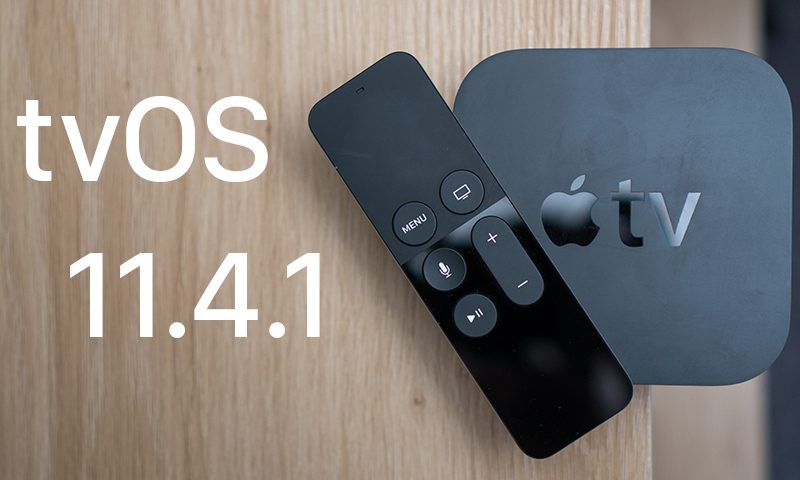 As a minor 11.x.x update tvOS 11.4.1 focuses on performance improvements and bug fixes to address issues that were discovered following the release of tvOS 11.4. Apple does not provide release notes for tvOS updates, so we may not know exactly what's included in the new software. tvOS 11.4.1 is likely to be one of the last updates to the tvOS 11 operating system, as Apple in June introduced tvOS 12, which will be released to the public this fall and is currently available to developers and public beta testers. tvOS 12 introduces support for Dolby Atmos, a new zero sign-on feature, Password AutoFill from the iPhone, and new aerial screensavers created in collaboration with the International Space Station. More information on tvOS 12 can be found in our tvOS 12 roundup. Discuss this article in our forums   
502
« on: July 10, 2018, 02:31:24 AM »
Apple today released watchOS 4.3.2, a small update to the watchOS 4 operating system that runs on the Apple Watch. watchOS 4.3.2 comes more than one month after the release of watchOS 4.3.1, a minor update. watchOS 4.3.2 can be downloaded through the dedicated Apple Watch app on the iPhone by going to General --> Software Update. To install the new software, the Apple Watch needs to have at least 50 percent battery, it needs to be placed on a charger, and it needs to be in range of the iPhone. 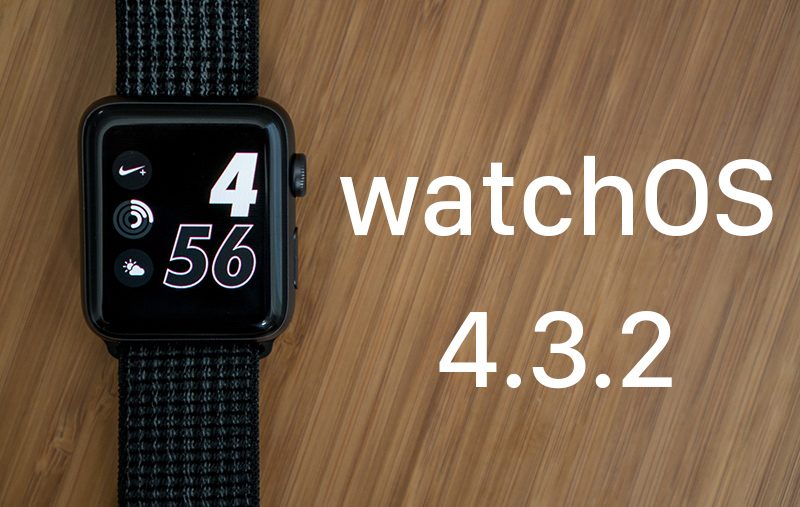 As a 4.x.x update, watchOS 4.3.2 is minor in scale, focusing on bug fixes and under the hood performance improvements. No major new features were discovered during the beta testing period. watchOS 4.3.2 may be one of the last updates to the watchOS 4 operating system now that Apple has shifted its focus to watchOS 5. watchOS 5 is available to developers and will see a public release this fall. Introduced at the Worldwide Developers Conference in June, watchOS 5 brings a push-to-talk Walkie-Talkie mode, support for automatic workout detection, a Podcasts app, new features for the Siri watch face, and more. For full details on what's coming in watchOS 5, make sure to check out our watchOS 5 roundup. Related Roundups: Apple Watch, watchOS 4, watchOS 5Buyer's Guide: Apple Watch (Caution)Discuss this article in our forums   
503
« on: July 10, 2018, 02:31:24 AM »
Apple today released iOS 11.4.1, the fifteenth update to the iOS 11 operating system that was first introduced in September 2017. iOS 11.4.1 comes more than a month after the release of iOS 11.4, a major update that introduced support for Messages in iCloud and AirPlay 2. iOS 11.4.1 is available on all eligible devices over-the-air in the Settings app. To access the update, go to Settings --> General --> Software Update. Eligible devices include the iPhone 5s and later, the iPad mini 2 and later, the iPad Air and later, and the 6th-generation iPod touch. 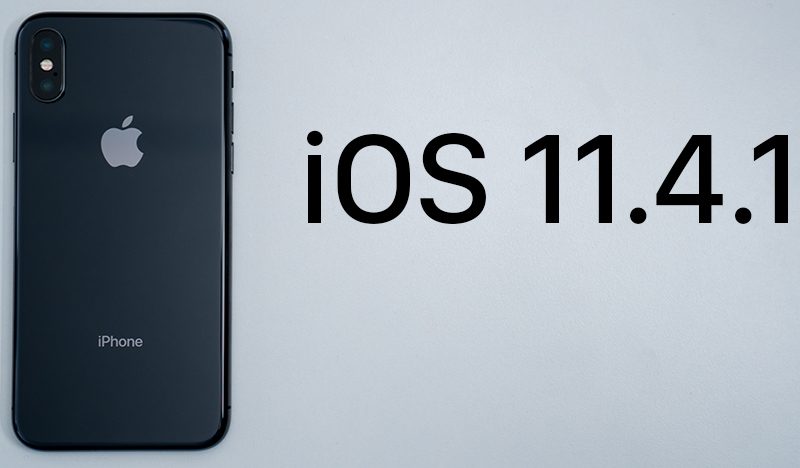 iOS 11.4.1 is a minor update that's been introduced to address bugs that have been discovered since the launch of iOS 11.4, with no new features discovered during the beta testing period. According to Apple's release notes, today's update fixes an issue that prevented some users from viewing the last known location of their AirPods in Find My iPhone and it improves the reliability of syncing mail, contacts, and notes with Exchange accounts. iOS 11.4.1 also includes USB Restricted Mode, which was first introduced in the iOS 12 beta. USB Restricted Mode is designed to make your iPhone and iPad immune to certain hacking techniques used by law enforcement or other potentially malicious entities to gain access to an iOS device. There are some iPhone access methods that use a USB connection, downloading data from your iPhone (or iPad) through the Lightning connector to crack the passcode. iOS 12 prevents this by disabling data access to the Lightning port if it's been more than an hour since your iOS device was last unlocked. 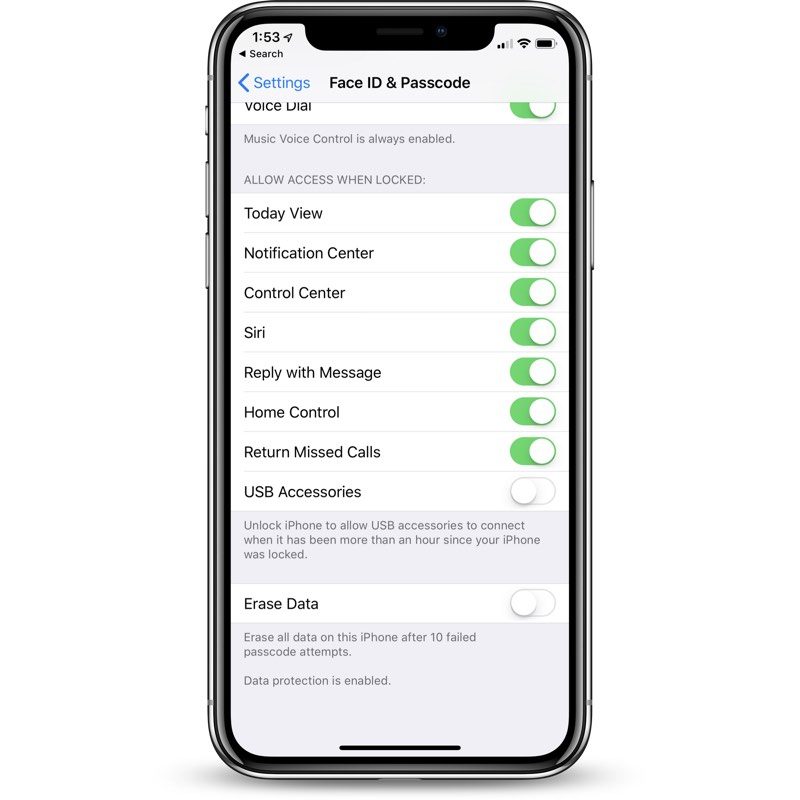 USB Restricted Mode is enabled by default when you update to iOS 11.4.1 (or iOS 12), but it can be toggled off if necessary by following the steps in our how to. Today's iOS 11.4.1 update may be one of the last updates that we see to the iOS 11 operating system. At its Worldwide Developers Conference in June, Apple introduced iOS 12, the next-generation version of iOS. iOS 12 brings improvements like Group FaceTime, Screen Time for monitoring iPhone and iPad usage, Do Not Disturb improvements, Grouped Notifications, new Memoji and Animoji options, and more, with full details available in our iOS 12 roundup. Related Roundup: iOS 11Discuss this article in our forums   
504
« on: July 10, 2018, 02:31:24 AM »
Alongside the release of iOS 11.4.1, the latest update to the iOS operating system, Apple has also released new 11.4.1 software that's designed for the HomePod. The new HomePod software will be installed automatically on the HomePod after you update to iOS 11.4, but you can also manually update and check your software version by following the instructions in our HomePod software how to. 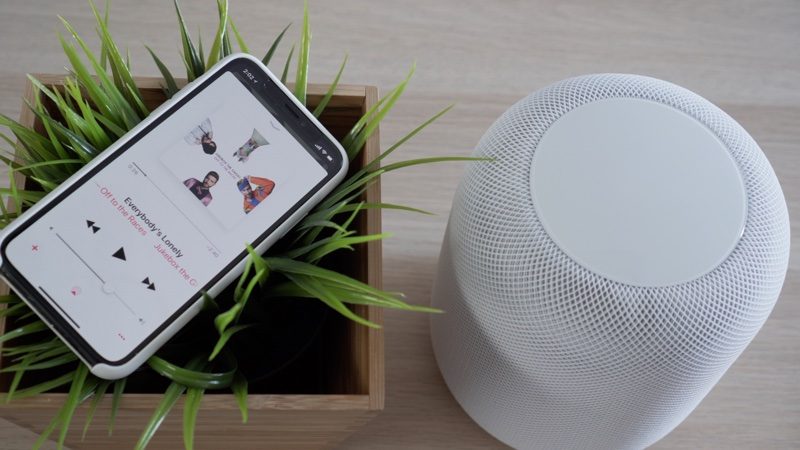 According to Apple's release notes, the 11.4.1 update for the HomePod includes "general improvements for stability and quality," with no further details provided. The new software comes over a month after Apple released the 11.4 update for the HomePod, which introduced stereo support and multi-room audio functionality through AirPlay 2. Related Roundup: HomePodBuyer's Guide: HomePod (Buy Now)Discuss this article in our forums   
505
« on: July 10, 2018, 02:31:24 AM »
Last week, Amazon announced that its annual Prime Day sale event will be held one week from today, on July 16. Ahead of the event, Amazon has begun Prime Day countdown discounts, which today includes a collection of solid deals on Anker power banks, chargers, wireless chargers, and cables. As with the upcoming Prime Day event, these Anker deals require you to have an Amazon Prime subscription to see the savings. Today's countdown savings also include a 50-inch Hitachi 4K TV for $289.99, down from $379.99, 30 percent discounts on Ecovacs robot vacuums, and more. For the Anker deals, check out the list below and be sure to place your order before they expire later tonight:  - Powerline USB-C to A 3.0 Cable (3 pack, 3ft) - $10.98, down from $14.99
- Powerline+ Lightning Cable (10ft, Red) - $12.59, down from $17.99
- Wireless Charging Pad With 12W Wall Charger - $12.59, down from $22.99
- PowerCore 5,000 mAh Power Bank - $13.99, down from $19.99
- Roav by Anker 30W Car Charger - $15.99, down from $21.99
- USB Type-C Premium 5-Port 60W USB Wall Charger - $24.74, down from $49.99
- PowerCore II 20,000 mAh Power Bank - $39.89, down from $56.99
- PowerCore+ 26,800 mAh Power Bank with Charger - $89.99, down from $119.99
Elsewhere on Amazon, RAVPower is offering a super low price on its 16,750mAh dual-USB battery pack for the iPhone just for MacRumors readers, dropping the price tag to the lowest it's ever been.  To get the deal, enter the code RUMORS010 at checkout, which discounts the charger from $26.99 to $21.99. This discount code will be good through tomorrow, July 10 at 11:59 p.m. PT. As a reminder, our full list of exclusive RAVPower codes are still live as well, through July 31: 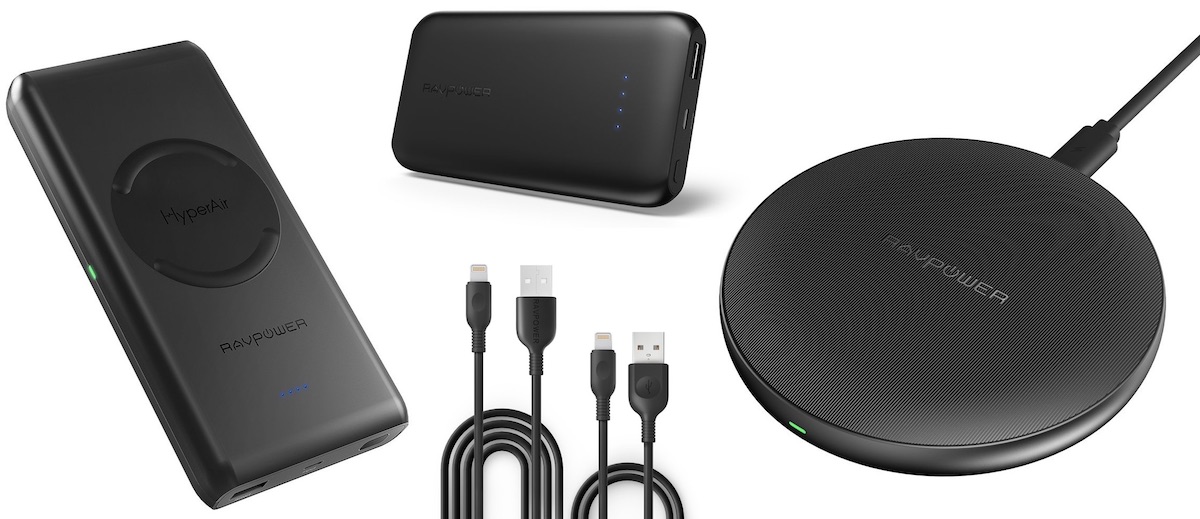 - Dual USB Car Charger with 3ft Lightning Cable - $8.39 with code RUMORS025, down from $11.99
- Ultra-Slim Wireless Charging Pad - $8.49 with code RUMORS083, down from $11.99
- 2-Pack 3ft + 6ft MFi Certified iPhone Cables - $11.99 with code RUMORS003, down from $15.99
- 40W 4-Port USB Wall Charger - $13.99 with code RUMORSC26, down from $17.99
- 10,000 mAh Portable Charger - $20.99 with code RUMORS077, down from $29.99
- 10,000 mAh Solar Portable Charger - $23.99 with code RUMORS082, down from $29.99
- 10W Fast Wireless Charging Pad - $23.99 with code RUMORS066, down from $37.99
- 22,000 mAh Power Bank with USB-C - $37.49 with code RUMORS009, down from $49.99
- 10,400 mAh 7.5W Portable Charger - $49.99 with code RUMORS080, down from $65.99
- 27,000 mAh AC Plug Universal Power Bank - $99.99 with code RUMORS055, down from $129.99
For more deals, including four free months of Apple Music for new subscribers over at Groupon, head over to our full Deals Roundup. Related Roundup: Apple DealsDiscuss this article in our forums   
506
« on: July 10, 2018, 02:31:24 AM »
The U.S. House Energy and Commerce Committee this morning sent letters to Apple and Google parent company Alphabet to ask 16 multi-part questions about how the companies handle customer data, according to a press release. The letter to Apple [
] cites recent media reports as the reason for the inquiry, referencing November news suggesting Android collects extensive user location data even when location services are disabled along with reports that smartphones collect and store "non-triggered" audio data from user conversations near a smartphone to hear a trigger phrase such as "Ok Google" or "Hey Siri." 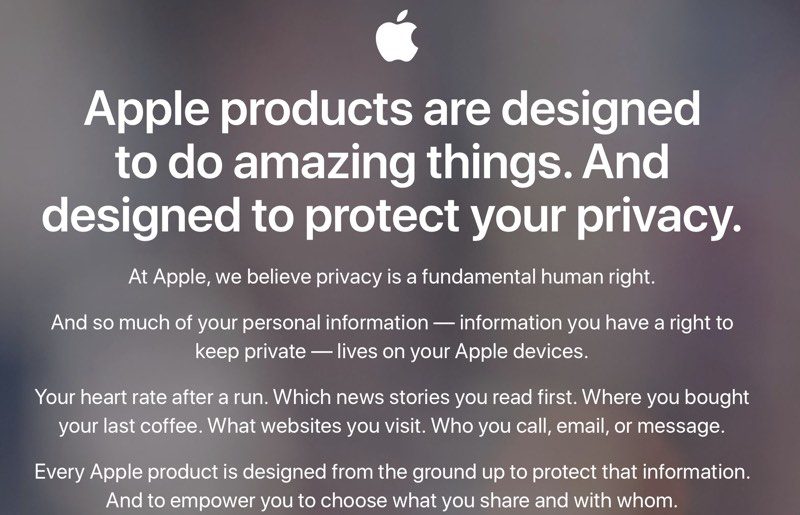 While both of these reports were focused on Android, the House wants to know if Apple has similar practices, collecting location data when location services, WiFi, and Bluetooth are disabled or gathering "non-triggered" voice data from customers and sharing it with third-party sources. A summary of some of the questions are below, with the complete list available in
shared by the committee. - When an iPhone lacks a SIM card (or if WiFi, Bluetooth, or location services are disabled), is that phone programmed to collect and locally store information through a different data-collection capability, if available, regarding: nearby cellular towers, nearby WiFi hotspots, or nearby Bluetooth beacons? If yes, are iPhones without SIM cards (or with WiFi/Bluetooth/location services disabled) programmed to send this locally stored information to Apple?
- If a consumer using an iPhone has disabled location services for multiple apps, but then reenables location services for one app, are iPhones programmed to reenable location services for all apps on that phone?
- Do Apple's iPhone devices have the capability to listen to consumers without a clear, unambiguous audio trigger? If yes, how is this data used by Apple? What access to this data does Apple give to third parties?
- Do Apple's iPhone devices collect audio recordings of users without consent?
- Could Apple control or limit the data collected by third-party apps available on the App Store? Please provide a list of all data elements that can be collected by a third-party app downloaded on an iPhone device about a user.
- Apple recently announced a partnership with RapidSOS for enhanced location services for 911 calls. What role will RapidSOS serve in the sharing and retention of this information?
- What limits does Apple place on third-party developers' ability to collect information from users' or from users' devices? Please describe in detail changes made in June 2017 from prior policies.
That last question references App Store Guidelines that Apple updated in June to restrict apps from from collecting user data to build advertising profiles or contact databases. The new rules also prohibit apps from harvesting data from an iPhone user's contacts to create contact databases. The letter goes on to request Apple's policies for data collection via the microphone, Bluetooth, WiFi, and cellular networking capabilities, along with Apple's policies pertaining to third-party access and use of data collected by the microphone. It also asks whether Apple has suspended or banned companies for violating its App Store rules, requesting specific examples and whether users had been notified their data was misused when the developer was banned. The House Energy and Commerce Committee asks Apple to make arrangements to provide a briefing on the topics listed in the letter, but it does not provide a timeline for when Apple needs to respond. Apple generally responds to these requests in a prompt manner, however. Apple maintains stricter and more transparent privacy policies than companies like Google and Facebook, with a dedicated privacy website that explains its approach to privacy, outlines tools available to customers to protect their privacy, and details government data requests. Privacy is at the forefront of many features Apple implements, and the company is careful to always outline the privacy protections that have been added when introducing new functionality. When introducing new Photos features in iOS 12 that allow for improved search and sharing suggestions, for example, Apple was quick to point out that these features are all on-device. Apple executives have said several times that Apple customers are not the company's product, and Apple CEO Tim Cook has maintained that privacy is a fundamental human right. From a recent interview: To me, and we feel this very deeply, we think privacy is a fundamental human right. So that is the angle that we look at it. Privacy from an American point of view is one of these key civil liberties that define what it is to be American.Cook has also said that people are not fully aware of how their data is being used and who has access to it, a problem that "needs to be addressed." "The ability of anyone to know what you've been browsing about for years, who your contacts are, who their contacts are, things you like and dislike and every intimate detail of your life - from my own point of view it shouldn't exist."Apple is continually introducing new privacy tools and protections for customers. Both macOS Mojave and iOS 12 include security and privacy improvements designed to better protect users, with additional tracking protection in Safari on both operating systems and extended privacy protections in Mojave. Note: Due to the political nature of the discussion regarding this topic, the discussion thread is located in our Politics, Religion, Social Issues forum. All forum members and site visitors are welcome to read and follow the thread, but posting is limited to forum members with at least 100 posts. Tag: privacyDiscuss this article in our forums   
507
« on: July 10, 2018, 02:31:24 AM »
Apple today released macOS High Sierra 10.13.6, the sixth update to the macOS High Sierra operating system available on Apple's Mac lineup. macOS High Sierra 10.13.6 comes more than a month after the release of macOS High Sierra 10.13.6, which introduced support for Messages in iCloud. macOS High Sierra 10.13.6 can be downloaded directly from the Mac App Store or through the Software Update function in the Mac App Store on all compatible Macs that are already running macOS High Sierra. 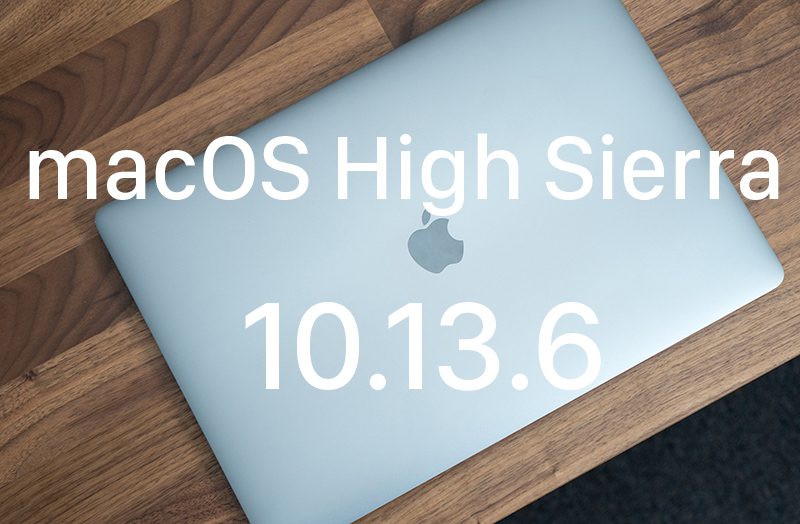 The macOS High Sierra 10.13.6 update is minor in scale, focusing on bug fixes and security improvements. No major feature changes were discovered during the beta testing process, but Apple's release notes say it adds AirPlay 2 multi-room support for iTunes. Full release notes are below: The macOS High Sierra 10.13.6 update adds AirPlay 2 multi-room audio support for iTunes and improves the stability and security of your Mac. This update is recommended for all users. AirPlay 2 for iTunes - Control your home audio system and AirPlay 2-enabled speakers throughout your house - Play music at the same time on multiple AirPlay 2-enabled speakers in your house, all in sync Other improvements and fixes - Fixes an issue that may prevent Photos from recognizing AVCHD media from some cameras - Fixes an issue that may prevent Mail users from moving a message from Gmail to another accountmacOS High Sierra 10.13.6 may be one of the final updates to the macOS High Sierra operating system, as Apple in June introduced macOS Mojave, an update that will be launching to the public this fall. macOS Mojave is currently available to developers and public beta testers and will be tested for several months before it sees a launch. macOS Mojave introduces a system-wide Dark Mode, Desktop Stacks for organizing all of the files on your desktop, several changes to Finder to make it quicker and easier to access and edit your files, Continuity Camera for importing photos to Mac right from an iPhone, and new apps that include Apple News, Socks, Home, and Voice Memos. For full details on all of the new features that are coming in the macOS Mojave update, make sure to check out our roundup. Related Roundup: macOS High SierraDiscuss this article in our forums   
508
« on: July 09, 2018, 01:52:19 AM »
Apple this afternoon uploaded a new iPhone X ad entitled "Memory" to its YouTube channel, which is designed to promote Face ID and its ability to replace a password to log into apps and websites. In the humorous spot, there's a gameshow-style setup in an arena filled with people, starring a man tasked with solving memory challenges. A host asks him to complete a final challenge: "This morning, you created an online biking password. What is it?" The audience gasps as the man struggles to remember the password, before whipping out his iPhone X with Face ID. After it scans his face, the iPhone inputs the password into the site automatically and he wins the challenge. Suddenly, the ad flashes back to the real world coffee shop he's sitting in, where he clenches his fist victoriously. "Your face is your password," reads the end of the ad. "Memory" is one of several clever ads Apple has created to promote features like Face ID, Animoji, Portrait Mode, Portrait Lighting, and more in the iPhone X, and it follows "Unlock," a similar ad that also demonstrates the benefits of Face ID and the TrueDepth camera system. The video, which is a little over a minute and thirty seconds long, will likely be shown on television and on social media sites in the coming weeks. Related Roundup: iPhone XBuyer's Guide: iPhone X (Neutral)Discuss this article in our forums   
509
« on: July 08, 2018, 01:48:16 PM »
 Microsoft may be working to bring its Windows-based Movies & TV app to iOS devices, according to Windows Central. The app lets users browse and play movies and TV shows purchased from Microsoft's Store, but it's only available on Windows 10, Xbox, and Windows 10 Mobile, and Microsoft is apparently eager to bring it over to rival platforms to give consumers more of a reason to buy from its catalog of video content. While most people have moved over to streaming content via services like Netflix, there is still a whole lot of content that isn't immediately, or ever, available to stream. Lots of people buy digital movies and TV content, and Microsoft has a huge store that a lot of people seemingly ignore or don't know about because there is no mobile companion app for their phone. But it appears Microsoft is now finally working on bringing its Movies & TV service to iOS or Android, according to sources familiar with the matter.Microsoft killed off its Groove Music streaming service last year, which led many to assume the same fate would befall its Movies & TV service. However, since the death of Windows 10 mobile in October, Microsoft has seen fit to bring over some popular apps like Edge and Windows Launcher to iOS and Android, and it looks as if the company counts Movies & TV in that select list. That said, sources told Windows Central not to expect the iOS and Android version of Movies & TV anytime soon, since the app is still a work in progress. Tag: MicrosoftDiscuss this article in our forums   
510
« on: July 08, 2018, 01:48:16 PM »
Apple Music has now surpassed Spotify's subscriber count in the United States, according to an industry source who spoke to Digital Music News. The anonymous source, said to be a major U.S.-based distributor, is said to have shared a report with the website detailing the subscriber tallies of several streaming music services, including Apple Music, Spotify, Tidal, and Sirius XM. 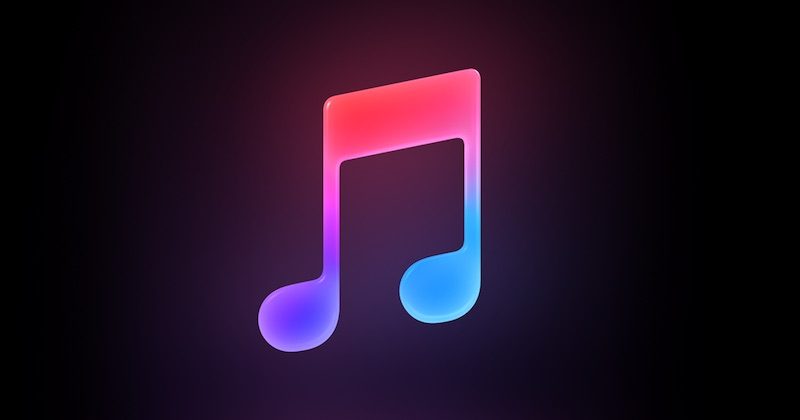 Among primarily on-demand music streaming services, the report says both Apple Music and Spotify have more than 20 million subscribers in the U.S., with Apple now "a hair ahead" with "20 million plus" members. The exact figure was reportedly withheld on request of the source to protect confidentiality. In February, The Wall Street Journal reported that Apple was gaining U.S. subscribers at a higher rate than Spotify. Apple’s US-based subscriber growth rate was believed to be 5 percent in the U.S., compared to Spotify’s 2 percent. Based on those figures, the report predicted Apple Music would surpass its biggest rival in the summer. Apple's growth was said to be due in part by the increasing numbers of devices in consumers' hands. Since the WSJ report, Apple has also released its HomePod speaker, which includes features specific to Apple Music. Apple's service recently surpassed its single-day streaming record, with Drake's fifth album, Scorpion, notching up over 170 million streams in its first 24 hours of availability. Spotify was unable to keep up with its rival's streaming figures for the album, despite Apple Music having around 120 million fewer subscribers than Spotify, suggesting Apple won via stronger user engagement. In May, Apple CEO Tim Cook said Apple Music had over 50 million users worldwide on either paid subscriptions or free trials. However, that figure still put Apple Music some ways off Spotify, which said it had 75 million paying subscribers as of March 31. Spotify has a much larger total of at least 170 million active users due to the free, ad-supported tier that it offers. Apple Music has been a major contributor to the continued growth of Apple's services category, which brought in $9.1 billion revenue in the second fiscal quarter of 2018, an increase of 31 percent on a year-over-year basis. Other service-related revenue includes App Store and iTunes Store sales, paid iCloud storage, licensing, and more. Tag: Apple MusicDiscuss this article in our forums   
Pages: 1 ... 32 33 [34] 35 36 ... 38
|








 Galaxy S9
Galaxy S9 










 Microsoft may be working to bring its Windows-based Movies & TV app to iOS devices, according to
Microsoft may be working to bring its Windows-based Movies & TV app to iOS devices, according to 